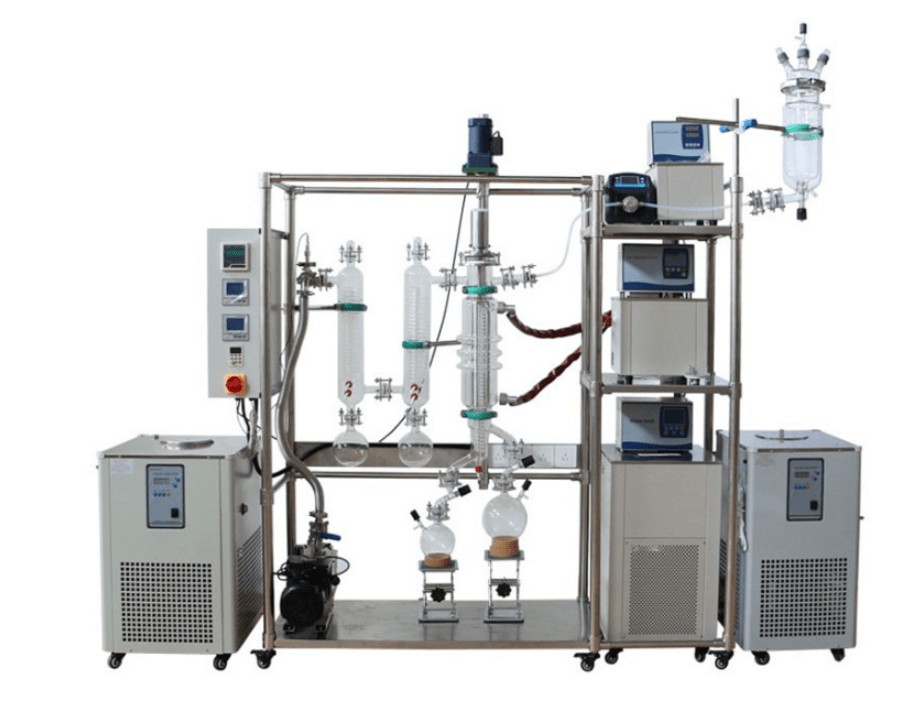Evaporators are used mainly for separating components in a liquid according to volatility. This process basically involves the application of heat which causes the liquid to evaporate, which leaves the substances that are less volatile behind. The now gaseous and more volatile substance will then be condensed followed by collecting it at a location that is separate.
Traditionally, continuous or batch evaporator types such as forced/natural circulation, rising and falling film, along with falling and climbing evaporators have all been used with success with various types of processed liquids. However, these types of evaporators are not efficient with viscous, high-boiling, heat-sensitive, and fouling liquids.
The design principle associated with thin film evaporators has allowed these devices to separate these difficult-to-handle products. This is a method that involves mechanical agitation and indirect heat-transfer in order to evaporate a very thin layer between 0.1mm to 1.0mm of a flowing substance placed under a controlled condition.

Thin Film Evaporator How It Works?
The driving force behind the efficiency associated with a thin-film evaporator is its capability of evaporating a targeted solution at a temperature that is relatively low with very little time spent inside the evaporator. This is made possible by a vacuum that this apparatus creates along with virtually no hydrostatic pressure present in this thin-liquid film.
The primary component of thin-film evaporators includes a wiper/rotor that is encased inside a cylindrical-heating jacket. The liquid will first enter just above a heated zone. It is then distributed evenly against the inner walls of this heating-jacket with the assistance of the wipers that rotate. The rotor will then form a turbulent and thin liquid layer, which then creates a precise mass transfer and heat flux condition. This results in the most volatile substances evaporating quickly, which will then travel out of the heating-cylinder where it is condensed or it is subjected to additional processing when required. The materials that are less volatile are then collected followed by sending these materials onto a discharge nozzle.
Thin-film evaporation provides numerous advantages over the conventional processes of evaporation. Some of these include:
- Efficient and fast heat transfer
- Dramatically lowered residence time
- Lowered pressure drop
- This technique allows materials to be processed that are susceptible to fouling or receptive to the process of thermal degradation
- High evaporation ratios
- Abilities to process high-solids and high-viscosity materials
- Easy to maintain or clean the equipment after each use
Thin-film evaporation is used typically for the specialty applications involved in pharmaceutical, chemical, food-and-beverage, nuclear, and biotechnology industries. Even though the applications across each sector may vary, the thin-film evaporator is commonly utilized for performing certain types of operations which include resource recovery, concentration, stripping, distillation, purification, and devolatilization.
The Main Applications:
- Evaporation can occur without the need for mass transfer
- Viscous products
- The evaporation ratios are moderate to high
- Can feed and accommodate streams that contain solid particles
- Stripping
The evaporation ratios can also be high, up to 95% or more.

